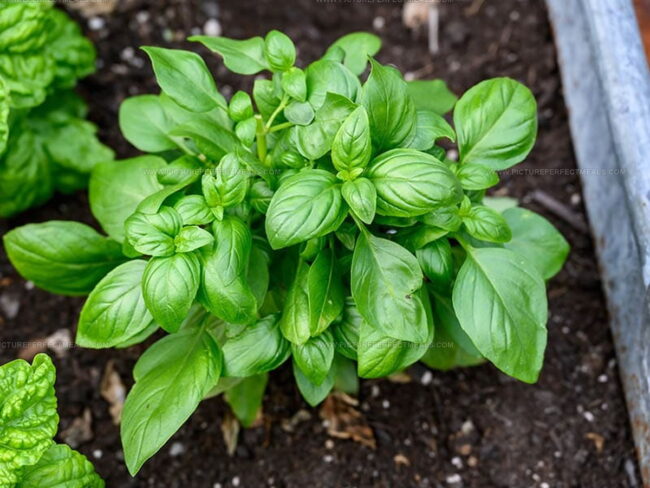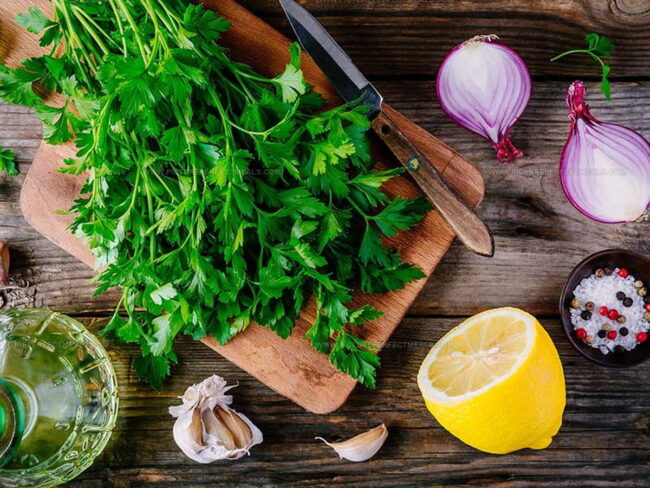13 Fresh Alternatives to Parsley That Will Elevate Your Dishes
Parsley offers fresh, grassy notes and vibrant color that brighten countless dishes.
If parsley isn’t available, various herbs and greens can provide comparable flavors and aesthetics.
Cilantro, chervil, or even basil offer alternatives, each with its unique nuances.
Combining herbs can also approximate parsley’s versatile profile.
These thirteen parsley substitutes give you flexibility across cuisines and recipes.
Understanding flavor profiles helps maintain balance and freshness in your dishes.
Explore creative ways to keep your meals lively without parsley.
What Parsley Brings to the Table
What to Substitute Dried Parsley
Dried parsley replacements add mild herbal flavor and color to dishes with various fresh or dried herbs available. Several options can brighten your meals. Discover the best substitutes to keep on hand.
Dried Chives
Substituting chives for parsley works wonderfully due to their versatile flavor profile that complements many dishes.
These small green herbs bring a mild garlic-onion taste that enhances recipes already containing these ingredients, making them an ideal replacement option.
You appreciate how chives maintain the same appealing green color in their meals while adding a distinct but complementary flavor note.
The switch is particularly helpful when parsley isn't available in your kitchen or garden, saving an extra trip to the store.
Dried chives offer an especially convenient and budget-friendly alternative that keeps well in the pantry for months, ready whenever you need that perfect finishing touch.
Dried Tarragon
Tarragon is an excellent substitute for parsley when you need that distinctive peppery flavor in your cooking.
This aromatic herb enhances various dishes as both a flavorful addition and an attractive garnish, making your meals more appealing.
Dried tarragon offers a similar profile to parsley but brings an interesting twist with subtle hints of cinnamon or anise that can elevate your recipes.
Since tarragon has a somewhat stronger character than parsley, it's best to add it gradually in small amounts until you achieve the perfect taste balance.
You often appreciate how easily this swap can be made without requiring special ingredients or techniques.
Dried Oregano
Dried oregano stands as a kitchen staple that Many people keep on hand for its rich, savory profile, making it a surprising substitute for dried parsley when needed.
Our herb cupboards sometimes run low at the worst moments, but oregano can save the day in small amounts since its flavor packs a much stronger punch than parsley's milder taste.
Italian cuisine lovers will recognize oregano's distinctive aroma from countless pasta sauces and pizza toppings, though its intensity means you should use about one-third the amount called for in recipes asking for parsley.
The herb's long shelf life adds to its appeal, often staying flavorful for up to six months when stored properly in a cool, dark place.
For dishes where the visual aspect matters, oregano's darker green appearance won't perfectly match parsley's brighter look, but the taste dimension it adds might just create a happy accident in your cooking.
Dried Basil
Dried basil packs a much stronger punch than fresh basil, making it an excellent substitute in many Italian dishes where its intense flavor can truly shine.
Most cooks recommend using it sparingly at first, then adding more to taste since its concentrated nature can easily overpower other ingredients.
The deep green color of dried basil adds visual appeal to your pasta sauces, pizzas, and soups while infusing them with its distinctive aroma.
Some home chefs might not realize that substituting dried basil in non-Italian recipes can dramatically alter the intended flavor profile of the dish.
For best results, store your dried basil in a cool, dark place to maintain its potent qualities longer.
Dried Chervil
Many cooks rely on dried chervil as a top-notch replacement for parsley since they share similar appearances and taste profiles.
People actually nickname chervil "French parsley" because these herbs are so closely related in the culinary world.
The main difference lies in chervil's more delicate flavor, which means you might need to add a bit extra when swapping it into recipes.
This pleasant herb brings a gentle freshness to dishes without overpowering other ingredients.
For best results, add chervil toward the end of cooking to preserve its subtle aromatic qualities that enhance soups, salads, and egg dishes beautifully.
Other Dried Herbs
Parsley substitutes are widely available in most home kitchens, with dried herbs being the easiest swap when fresh options aren't handy.
Mediterranean or Mexican dishes benefit from dried cilantro, which provides a similar green appearance with its own distinctive taste.
Dried celery leaves work wonderfully as an alternative for dishes where mild flavor and visual appeal matter more than strong herbaceous notes.
Italian seasoning or fine herbs can step in depending on what flavors would complement your specific recipe best.
Your pantry likely contains several herbs that can replace parsley in a pinch, encouraging culinary experimentation that might lead to unexpected and delicious results.
Fresh Cilantro
Cilantro makes an excellent substitute for parsley in many recipes, though its distinct flavor can dramatically change the outcome of your dish.
Mexican, Mediterranean, and Thai cuisines particularly benefit from fresh cilantro's unique taste profile.
The visual similarity between these herbs allows for seamless presentation swaps when you need an attractive garnish to add color and texture to your plate.
Some people experience cilantro as soapy-tasting due to genetic factors, so it's worth checking with dinner companions before making this substitution.
For the best results, add cilantro near the end of cooking since its delicate flavor compounds break down quickly with heat.
Fresh Arugula
Arugula is a remarkable substitute for herbs, especially when finely chopped and used in place of fresh parsley in various recipes.
Many chefs appreciate this peppery green for its distinctive flavor profile that adds depth to dishes without overpowering other ingredients.
The bitter notes in arugula demand a light hand when using it as a replacement, so starting with small amounts helps you achieve the perfect balance in your cooking.
For best results, avoid using arugula as a garnish since its larger leaf structure might detract from the visual appeal of your carefully plated dish.
More culinary applications and tips about this versatile green can enhance your cooking repertoire and inspire creative meal preparations.
Fresh Endive
Substituting endive for parsley gives you a similar green, curly appearance with just a hint of flavor difference.
The peppery, bitter taste of endive makes it stand out when used sparingly in recipes where parsley would normally go.
Many chefs choose this alternative specifically for its distinctive flavor profile that adds complexity to salads and garnishes.
The versatility of endive extends beyond just appearance, as it provides both visual appeal and a sophisticated taste dimension to your dishes.
You appreciate how this simple swap can elevate everyday meals without requiring special ingredients or techniques.
Fresh Chives
Substituting chives for parsley works wonderfully in many savory dishes, as both herbs add that perfect finishing touch with bright color and flavor.
Chives bring a mild onion taste compared to parsley's earthier profile, making them especially good in potato dishes, soups, and egg recipes.
Most home cooks appreciate how easily chives can be snipped over completed dishes for that professional-looking garnish without any special techniques.
The substitution ratio is typically one-to-one, so no complicated measurements are needed when making the swap.
Many people keep both herbs growing in small pots on windowsills since they're among the easiest culinary plants to maintain at home.
Fresh Oregano
Oregano makes a fantastic replacement for parsley in many recipes, especially Italian dishes where its bold flavor really shines.
The strong taste means you should use less oregano than the amount of parsley called for in your recipe, perhaps starting with half the quantity.
Most grocery stores carry fresh oregano year-round in the produce section, so finding it shouldn't be a challenge when you need this substitution.
Mediterranean and Greek cuisine also benefit from oregano's distinctive flavor profile, which adds depth to salads, marinades, and grilled meats.
For best results, add fresh oregano toward the end of cooking to preserve its aromatic oils and vibrant taste.
Fresh Celery Leaves
Celery leaves offer a fantastic alternative to parsley when you need an attractive garnish on your dishes, showcasing their distinctive curly, green appearance.
These leafy tops provide a milder, more delicate flavor profile compared to parsley's bold taste, making them perfect for subtle flavor enhancement.
The high water content in celery leaves does limit their usefulness in cooked recipes where parsley would normally shine.
For best results, try sprinkling fresh celery leaves on completed dishes rather than incorporating them during the cooking process.
Fresh Carrot Greens
Carrot greens, once dismissed as inedible, make an excellent substitute for fresh parsley since they actually belong to the same botanical family.
These mild-tasting tops can add a subtle flavor to your dishes when finely chopped, working especially well in soups and stews where their delicate taste blends nicely with other ingredients.
Many people now save these nutritious greens instead of tossing them away, discovering they contain significant amounts of vitamins and minerals.
The slight bitterness that carrot tops sometimes carry means you should start with smaller amounts until you find the perfect balance for your recipe.
Parsley Substitute Strategies Based on Recipes
Parsley is a kitchen multitasker, like freshening up salads, brightening cooked dishes, and balancing rich flavors. When you need a substitute, the best choice depends on how you’re using it.
For Raw Dishes and Garnishes
When parsley is used fresh, like in salads, salsas, or as a garnish, it provides a crisp texture and a bright, clean flavor. In these cases, choose substitutes that are also fresh, mild, and vibrant.
Look for herbs that won’t overpower the dish but instead add a similar refreshing note and appealing green color. It’s important that the substitute maintains a tender texture to complement other fresh ingredients without becoming tough or bitter.
For Cooked Dishes and Sauces
Parsley adds a subtle herbal lift and freshness to cooked dishes such as soups, stews, and sauces. When replacing it here, select herbs that hold up well to heat without losing their flavor entirely.
The substitute should blend smoothly into the dish, enhancing rather than dominating the overall profile.
Since cooking can mellow herbal flavors, a slightly more robust herb can work well to maintain presence after simmering or roasting.
For Rich and Hearty Recipes
In richer dishes like creamy pastas, roasted meats, or buttery sauces, parsley acts as a palate cleanser, cutting through heaviness with its mild bitterness and fresh flavor. A good substitute should bring that same bright contrast and textural lift to refresh the palate.
Choosing herbs with a clean, crisp flavor that can balance richness helps keep the dish from feeling too heavy or one-dimensional.
Flavor-Balancing Tips for Parsley Alternatives
Best Storage Practices for Parsley Substitutes
Storing parsley substitutes properly is key to maintaining their fresh flavor, vibrant color, and crisp texture.
For fresh herbs or leafy alternatives, it’s best to keep them in the refrigerator wrapped loosely in a damp paper towel and placed inside a breathable container or bag. This helps retain moisture without causing sogginess or mold. Avoid crushing or tightly packing the herbs to prevent bruising.
If you’re working with dried substitutes, store them in airtight containers away from heat, light, and humidity to preserve their aromatic oils and flavor for as long as possible. Keep them in a cool, dark pantry or cupboard.





Jenna Hartley
Founder & Recipe Creator
Expertise
Education
Box Hill Institute, Melbourne
William Angliss Institute, Melbourne
Jenna is the heart of Picture Perfect Meals, turning simple ingredients into beautiful, easy‑to‑make dishes.
Growing up around family meals in Melbourne, she trained at Box Hill Institute and then perfected her pastry skills at William Angliss Institute. She loves mixing classic Australian flavors with fresh ideas to keep cooking fun and stress‑free.